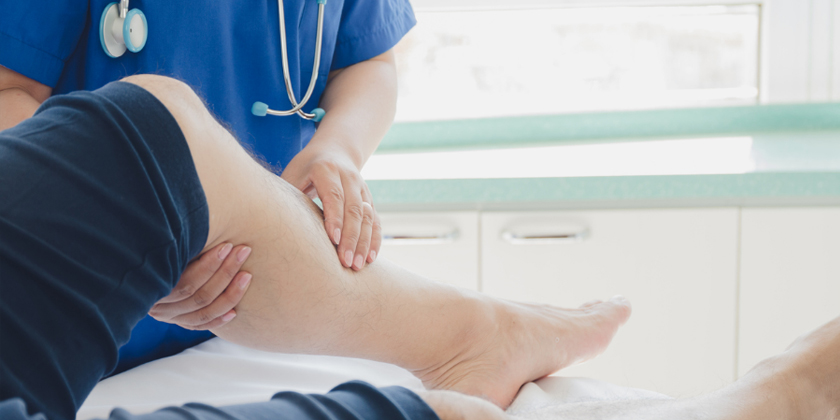Say Goodbye to Leg Pain: Practical Tips for Managing Venous Insufficiency
The Society for Vascular Surgery notes that faulty vein valves cause leg pain and swelling in up to 40% of adults who have chronic venous insufficiency. Without proper management, chronic venous insufficiency can develop into varicose veins or lead to skin changes and ulcers. This guide presents actionable and research-supported strategies to treat leg pain while controlling CVI based on information from Johns Hopkins Medicine and Cleveland Clinic together with peer-reviewed research.
—
Understanding Venous Insufficiency
Chronic venous insufficiency develops when leg veins struggle to transport blood back to the heart because of damaged valves resulting from deep vein thrombosis (DVT) or varicose veins. Blood accumulates in veins to create venous hypertension which produces symptoms such as leg aches, swelling and discolored skin. Early management can prevent complications, per StatPearls.
—
Manage Leg Pain and CVI with These Practical Tips
Wear Compression Stockings:
- How It Helps: Graded compression stockings which range from 20–30 mm Hg to 30–50 mm Hg function by exerting pressure to enhance circulation and decrease swelling while also helping to alleviate pain. Patients who consistently used the prescribed treatment experienced 70–80% less edema and discomfort according to a NEJM study published in 2024.
- Action: The Cleveland Clinic advises patients to wear knee-high or thigh-high stockings throughout the day and remove them at night. Ensure proper fit via a medical supplier.
- Tip: Initial pressure should be 20–30 mm Hg for mild symptoms but seek medical advice for increased pressure needs. Wash stockings daily to maintain elasticity.
Elevate Your Legs:
- How It Helps: When legs are elevated above heart level venous pressure decreases which helps to reduce swelling and discomfort. Elevation of the legs cuts edema by half in just 30 minutes according to Cedars-Sinai.
- Action: Position legs above heart level between 15 and 30 minutes three to four times a day by using pillows or a recliner. Always elevate your legs after you have been standing or sitting for extended periods.
- Tip: WebMD advises lying on your back when elevating to achieve maximum results.
Exercise Regularly:
- How It Helps: Walking and swimming strengthen calf muscles which improves blood flow while simultaneously decreasing pain levels. A BMJ Best Practice study from 2023 found that patients experienced CVI symptom improvement by 60% after daily 30-minute walks.
- Action: NYU Langone recommends performing 30 minutes of exercise five times weekly. Perform ankle pumps by flexing or pointing toes to improve mobility when movement is restricted.
- Tip: Johns Hopkins advises wearing compression stockings while exercising for extra support.
Maintain a Healthy Weight:
- How It Helps: Excess weight increases vein pressure, worsening CVI. UPMC reports that a 5–10% body weight reduction helps alleviate symptoms.
- Action: Adopt a nutritional plan designed for heart health that minimizes sodium intake and emphasizes fruits, vegetables, and lean proteins. Use apps like MyFitnessPal to track calories.
- Tip: For a customized plan to prevent fluid retention consult a dietitian as recommended by Healthline.
Avoid Prolonged Sitting or Standing:
- How It Helps: Long periods of immobility exacerbate blood pooling. Engaging in consistent movement helps to activate the calf pump mechanism and minimizes discomfort according to Circulation.
- Action: Move around every 30 to 60 minutes by walking or stretching. According to Medical News Today, while standing you need to move your weight or perform calf raises.
- Tip: Use your phone timer to prompt regular movement breaks throughout your workday.
Stay Hydrated:
- How It Helps: Maintaining adequate hydration keeps blood fluid and promotes better circulation. @Heal_And_Go posted on X in 2025 about how hydration helps alleviate CVI discomfort.
- Action: WebMD recommends drinking between 8–10 glasses of water each day while increasing intake when active or exposed to hot weather conditions.
- Tip: Cleveland Clinic advises reducing caffeine and alcohol intake because they lead to dehydration.
Use Medications as Prescribed:
- How It Helps: Johns Hopkins states that high-risk patients benefit from diuretics which decrease swelling and pentoxifylline which enhances blood flow while anticoagulants block clot formation.
- Action: It is essential to adhere to your doctor’s prescribed medication plan if you have previously experienced deep vein thrombosis (DVT). Report side effects promptly.
- Tip: Inquire about using aspirin to promote ulcer healing when severe chronic venous insufficiency exists according to UPMC.
Consider Minimally Invasive Treatments:
- How It Helps: According to StatPearls, sclerotherapy and endovenous ablation procedures treat faulty veins and eliminate pain in 80% of persistent symptom cases.
- Action: Seek a vascular surgeon’s expertise for a duplex ultrasound to evaluate vein damage and explore treatment options as recommended by UCSF.
- Tip: Cedars-Sinai recommends these outpatient procedures because they lead to fast recovery and work well for moderate CVI.
—
When to Seek Medical Help
Consult a doctor if you experience:
- Continued ongoing swelling, pain sensations and skin alterations which include red-brown discoloration and leathery texture.
- New or worsening varicose veins.
- Patients should seek medical attention if they develop open ulcers on their legs or detect infection indicators like redness and warmth according to Cleveland Clinic.
ResearchGate reported that 150,000 cases of CVI are diagnosed each year in the U.S. while stressing the importance of early treatment to stop ulcers or DVT from developing.
—
Why Managing CVI Matters in 2025
The United Nations projects that 68% of global inhabitants will reside in urban areas by 2050 which increases CVI risk through sedentary lifestyle habits. The United States spends $500 million each year on healthcare costs due to untreated CVI according to StatPearls. The public’s search for feasible solutions in X highlights the requirement for active management strategies in 2025.
—
Additional Tips
- Monitor Symptoms: According to WebMD you should maintain a journal to record pain and swelling triggers.
- Wear Comfortable Shoes: NYU Langone advises selecting supportive footwear instead of high heels.
—



